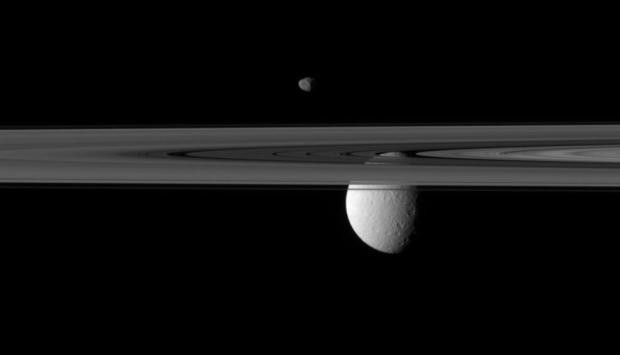
- Select a language for the TTS:
- UK English Female
- UK English Male
- US English Female
- US English Male
- Australian Female
- Australian Male
- Language selected: (auto detect) - EN
Play all audios:
Astrophysicists have gained new insights into the chemical composition of the surface layer of Rhea, the second largest moon of Saturn, by analysing ultraviolet images. One of these images,
captured during fly-bys by the Cassini spacecraft, reveals signs of absorption, probably by hydrazine present on Rhea, the researchers report. Low-energy radiation can penetrate Rhea’s icy
upper layer and destroy ammonia there, suggesting that its hydrazine may have come from elsewhere – possibly from Titan, Saturn’s largest moon, the researchers say. Cassini has advanced
scientists’ knowledge of Rhea’s geology and surface topography considerably. However, its surface composition has remained largely unknown. Cassini fly-bys have revealed that water ice
dominates Rhea’s landscape. To shed more light on the matter, scientists, including researchers from the Physical Research Laboratory in Ahmedabad and Bhaba Atomic Research Centre in Indore,
carried out laboratory experiments and analysed ultraviolet images of the icy moon. Analysis revealed that hydrazine has existed in Titan’s atmosphere over the past four billion years and
that it does not get destroyed before accumulating onto Rhea’s surface. The journey of hydrazine from Titan to Rhea probably happened through a process called ‘sputtering’, the researchers
claim. In sputtering, ion-rich solar winds possibly impacted Titan at high speeds, knocking atmospheric gas into space. This ejected gas containing hydrazine then drifted in space and made
its way to Rhea, the researchers say. This is the same process that caused Mars to lose its atmosphere over billions of years, they note. REFERENCES 1. Elowitz, M. et al. Possible detection
of hydrazine on Saturn’s moon Rhea. Sci. Adv. 7: eaba5749 (2021)







